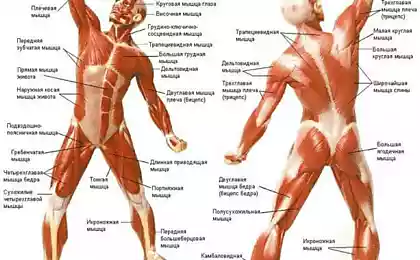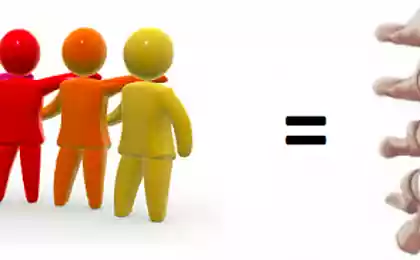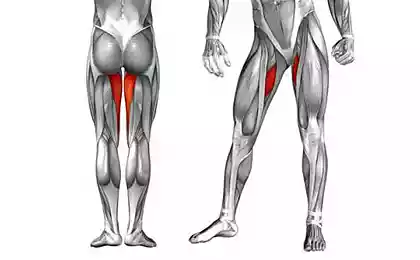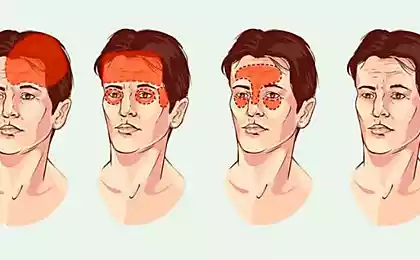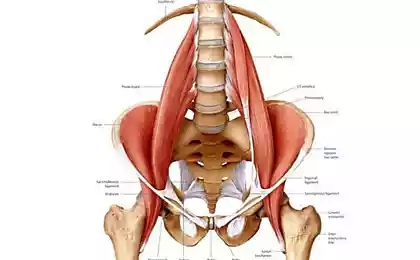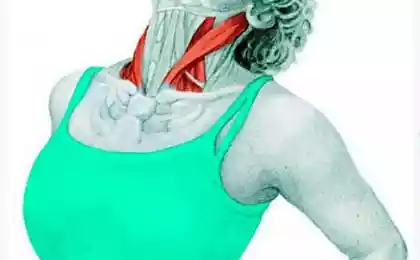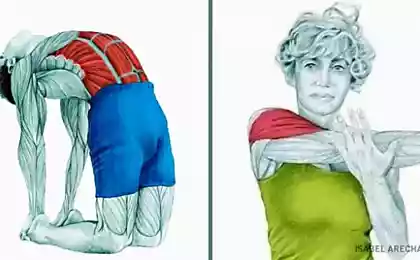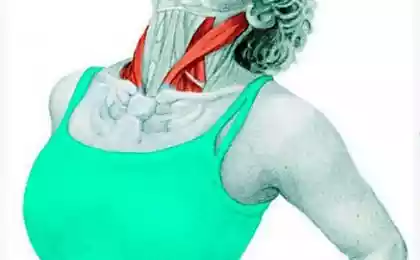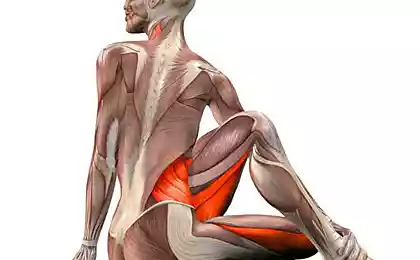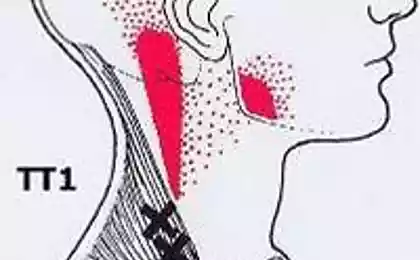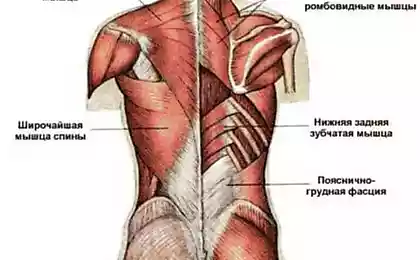608
The rules of health care spins on all occasions
Ergonomics (from Greek: "ergon" — "work") is the study of the labor processes.
American scientists understand ergonomics more broadly as the science of control of his body at work and leisure.
Question: You said that there are rules of health care spins on all occasions. Let's talk about my job: what to do if I spent the whole day sitting?
Answer: first, find a comfortable chair or armchair. Different chairs are designed for different classes, and the best chair for working at the computer may be totally unsuitable, say, for writing. Choose a chair that is comfortable for that kind of activity to which you devote most of the time.
The basic requirements for the chair (the chair)
If your feet are resting on the floor, it not only helps to relieve the pain, but will not allow you to constantly spin around its axis to reach any important papers in your office, without leaving the chair.
Better rise a little, take what you need and sit back: frequent rotation may be detrimental impact on the lower back.
If you choose a chair yourself,check out:
It is desirable that all of this you could regulate themselves at their own discretion.
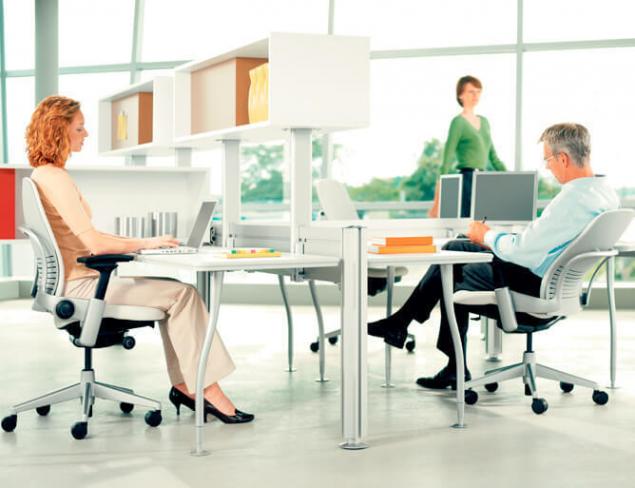
Question: I think it would be too expensive. How can I convince my firm to pay for all this?
Answer: of Course, such a seat can be rather expensive, but every visionary boss knows that employee health is the main capital of his firm. In addition, some measures you can take yourself.
If you can't change your seat, use a box as a stand under the feet. If the chair does not support the bottom of your back, then put yourself behind a pillow or folded blanket.
Question: I sit the whole day behind the computer. What to take extra measures to not hurt back?
Answer: Watch your posture. It generally applies to anyone who sits or stands all day. Especially quick to acquire bad habits, if you the whole day "glued" to the monitor.
Periodically change your posture throughout the day, this reduces the chances of pain in the neck and back.
In addition, place the monitor so that it is slightly below your eye level. This will allow you to relax the neck, head slightly down, because when you tilt your head backwards, the muscles of the neck and head are tense.
Some offices use headphones instead of the handset in order to prevent "the effect of telephone shoulder."
Question: You talked about how you should sit. But if I'm at work standing for hours in a row then what?
Answer: in Order to relieve the lumbar vertebrae make a stand one leg: a small stool, a block of wood or even some elevation. From time to time change the supporting leg and you will notice that standing was easier.
Question: Well, now I have a nice chair and foot rest. What I am sure you will recommend?
Answer: Sometimes leave their workplace, to stretch your stiff muscles. Remember the six types of exercise-"try", that can be performed, while remaining in the workplace.
If you are standing:
1. Bend your arms at the elbows. One elbow forward, lift as high as possible, the other pull back and stretch.
2. Resting his hands on his waist, gently rotten back and wait a few seconds.
3. To straighten your shoulders, make a few circular motions with them first rearward, then forward.
4. Raise your hand bent at the elbow to chest level and move them back — as much as I can. So wait some time, then relax.
If you are sitting:
1. Can lean back chair. While exhaling severely strain the abdominal muscles; count to 10 and relax.
2. Sit on a chair with a high straight back; firmly press the body to the backrest and the seat, as if the make up chair one.
Raise your right hand as high as if your fingertips are trying to touch the ceiling. Watch the movement of the hand turn the head and eyes.
Keep this position for several seconds and when he felt the tension of the muscles relax.
The same repeat with the other hand. Each exercise, do it several times.
Question: Maybe my boss will be unhappy if you see that I am doing these exercises at the workplace.
Answer: Only if he does not know what is good for business. According to the authoritative judgment of a specialist in ergonomics, a professional chiropractor, Dr. John. Arco de Trajano, "short, frequent breaks in the work, devoted to such exercise, save more money at the expense of the health of workers and high labour productivity than firm loses the time spent on exercise".
Arco de Trajano says that the authorities, including to their employees in the program of a working day twice 10-minute exercise improves the working attitude of the team and its performance.
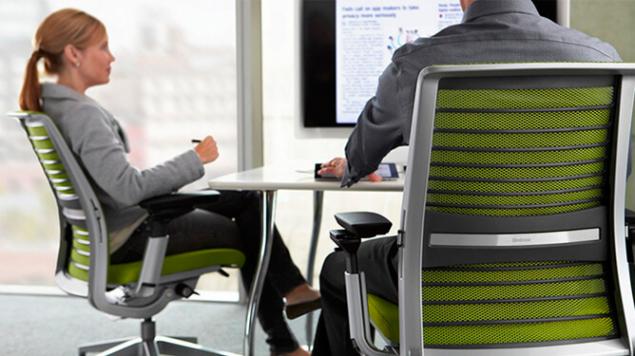
Question: How much you can save money by following the advice of economists?
Answer: Many companies have saved this way a lot of money. For example, the plant belonging to the Corporation "Grammar", which employs 550 people, for three years implemented ergonomic program, and the results are in:
Another company with strong work team for five years has saved more than $ 1.2 million.
As you can see, these benefits have a direct monetary basis.
Question: I now know how to properly sit and stand. Now tell us about how to lift weights.
Answer: There are a range of such rules. The American Academy of orthopaedic surgeons (AAHA) has developed a national educational program called "Safe lifting".
Here, for example, that they offer:
1. First consider what you want to do and take your time.
2. Stand so that the object to be lifted, was close to you.
3. Spread your feet shoulder-width apart, so that you have a solid area of support.
4. Bend your knees, but not shebites at the waist; keep the natural curve of your back.
5. Tighten your abdominal muscles.
6. Capturing one or both hands of the object, straighten up due to the leg extension, but not the case.
7. Do not rotate the housing with the load in the hands; instead, turn your feet in the direction you intend to move with the load, and turn in that direction, stepping with your feet.
8. Do not attempt to lift too heavy or uncomfortable for you subject. Call someone to help.
Question: I spend all day driving. If the same ergonomic rules for drivers?
The answer is: Yes And no. In both cases, you should take breaks, so try not to drive long distances without stopping to rest.
Definitely need to sit in the cockpit you feel comfortable. This will require quite a bit. First of all need lumbar support, a small pillow or cushion that can be mounted on the back of the driver's seat.
Then it would be good to make the armrests to not tire the muscles of the shoulders and neck. You can, for example, put a couple of pillows under the arm-side seat for the passenger (unless, of course, next to you no one is sitting), and the second armrest to use the inner door handle of the cab, wrapped it with something soft.
Purchase and use a device for automatic control of the roadway: it will give you the opportunity to relax a little. Slightly raise the rear view mirror, it will help you to see the traffic behind you, not crouching forward.
Also interesting: How to live back, if she had a head
Bad back: stretch or "loading"
By the way, here's another tip. Try to abandon many men have the habit of constantly carrying a wallet in your back pocket. When you are sitting, including driving, tightly Packed wallet presses directly on sciatic nerve and it may, if not cause, then certainly to enhance the pain.published
Author: C. Salmans
Source: vk.com/wall-23903469?offset=3820&w=wall-23903469_1968%2Fall
American scientists understand ergonomics more broadly as the science of control of his body at work and leisure.
Question: You said that there are rules of health care spins on all occasions. Let's talk about my job: what to do if I spent the whole day sitting?
Answer: first, find a comfortable chair or armchair. Different chairs are designed for different classes, and the best chair for working at the computer may be totally unsuitable, say, for writing. Choose a chair that is comfortable for that kind of activity to which you devote most of the time.
The basic requirements for the chair (the chair)
- the lower part of your back should have support;
- the seat should be at such a height that your knees slightly above the hips, and the soles of the feet firmly and confidently standing on the floor.
If your feet are resting on the floor, it not only helps to relieve the pain, but will not allow you to constantly spin around its axis to reach any important papers in your office, without leaving the chair.
Better rise a little, take what you need and sit back: frequent rotation may be detrimental impact on the lower back.
If you choose a chair yourself,check out:
- the height of the seat,
- its depth and width,
- the slope and the softness of the pillow,
- the backrest height and its form,
- the angle between seat and backrest,
- the height and the distance between the armrests.
It is desirable that all of this you could regulate themselves at their own discretion.

Question: I think it would be too expensive. How can I convince my firm to pay for all this?
Answer: of Course, such a seat can be rather expensive, but every visionary boss knows that employee health is the main capital of his firm. In addition, some measures you can take yourself.
If you can't change your seat, use a box as a stand under the feet. If the chair does not support the bottom of your back, then put yourself behind a pillow or folded blanket.
Question: I sit the whole day behind the computer. What to take extra measures to not hurt back?
Answer: Watch your posture. It generally applies to anyone who sits or stands all day. Especially quick to acquire bad habits, if you the whole day "glued" to the monitor.
Periodically change your posture throughout the day, this reduces the chances of pain in the neck and back.
In addition, place the monitor so that it is slightly below your eye level. This will allow you to relax the neck, head slightly down, because when you tilt your head backwards, the muscles of the neck and head are tense.
Some offices use headphones instead of the handset in order to prevent "the effect of telephone shoulder."
Question: You talked about how you should sit. But if I'm at work standing for hours in a row then what?
Answer: in Order to relieve the lumbar vertebrae make a stand one leg: a small stool, a block of wood or even some elevation. From time to time change the supporting leg and you will notice that standing was easier.
Question: Well, now I have a nice chair and foot rest. What I am sure you will recommend?
Answer: Sometimes leave their workplace, to stretch your stiff muscles. Remember the six types of exercise-"try", that can be performed, while remaining in the workplace.
If you are standing:
1. Bend your arms at the elbows. One elbow forward, lift as high as possible, the other pull back and stretch.
2. Resting his hands on his waist, gently rotten back and wait a few seconds.
3. To straighten your shoulders, make a few circular motions with them first rearward, then forward.
4. Raise your hand bent at the elbow to chest level and move them back — as much as I can. So wait some time, then relax.
If you are sitting:
1. Can lean back chair. While exhaling severely strain the abdominal muscles; count to 10 and relax.
2. Sit on a chair with a high straight back; firmly press the body to the backrest and the seat, as if the make up chair one.
Raise your right hand as high as if your fingertips are trying to touch the ceiling. Watch the movement of the hand turn the head and eyes.
Keep this position for several seconds and when he felt the tension of the muscles relax.
The same repeat with the other hand. Each exercise, do it several times.
Question: Maybe my boss will be unhappy if you see that I am doing these exercises at the workplace.
Answer: Only if he does not know what is good for business. According to the authoritative judgment of a specialist in ergonomics, a professional chiropractor, Dr. John. Arco de Trajano, "short, frequent breaks in the work, devoted to such exercise, save more money at the expense of the health of workers and high labour productivity than firm loses the time spent on exercise".
Arco de Trajano says that the authorities, including to their employees in the program of a working day twice 10-minute exercise improves the working attitude of the team and its performance.

Question: How much you can save money by following the advice of economists?
Answer: Many companies have saved this way a lot of money. For example, the plant belonging to the Corporation "Grammar", which employs 550 people, for three years implemented ergonomic program, and the results are in:
- in 1992, the enterprise administration was able to reduce the cost of treatment of workers and paid sick leave of up to 36 832 $ 143 067 $ 19100 year.
Another company with strong work team for five years has saved more than $ 1.2 million.
As you can see, these benefits have a direct monetary basis.
Question: I now know how to properly sit and stand. Now tell us about how to lift weights.
Answer: There are a range of such rules. The American Academy of orthopaedic surgeons (AAHA) has developed a national educational program called "Safe lifting".
Here, for example, that they offer:
1. First consider what you want to do and take your time.
2. Stand so that the object to be lifted, was close to you.
3. Spread your feet shoulder-width apart, so that you have a solid area of support.
4. Bend your knees, but not shebites at the waist; keep the natural curve of your back.
5. Tighten your abdominal muscles.
6. Capturing one or both hands of the object, straighten up due to the leg extension, but not the case.
7. Do not rotate the housing with the load in the hands; instead, turn your feet in the direction you intend to move with the load, and turn in that direction, stepping with your feet.
8. Do not attempt to lift too heavy or uncomfortable for you subject. Call someone to help.
Question: I spend all day driving. If the same ergonomic rules for drivers?
The answer is: Yes And no. In both cases, you should take breaks, so try not to drive long distances without stopping to rest.
Definitely need to sit in the cockpit you feel comfortable. This will require quite a bit. First of all need lumbar support, a small pillow or cushion that can be mounted on the back of the driver's seat.
Then it would be good to make the armrests to not tire the muscles of the shoulders and neck. You can, for example, put a couple of pillows under the arm-side seat for the passenger (unless, of course, next to you no one is sitting), and the second armrest to use the inner door handle of the cab, wrapped it with something soft.
Purchase and use a device for automatic control of the roadway: it will give you the opportunity to relax a little. Slightly raise the rear view mirror, it will help you to see the traffic behind you, not crouching forward.
Also interesting: How to live back, if she had a head
Bad back: stretch or "loading"
By the way, here's another tip. Try to abandon many men have the habit of constantly carrying a wallet in your back pocket. When you are sitting, including driving, tightly Packed wallet presses directly on sciatic nerve and it may, if not cause, then certainly to enhance the pain.published
Author: C. Salmans
Source: vk.com/wall-23903469?offset=3820&w=wall-23903469_1968%2Fall
At MIT have created artificial muscle fibres from nylon
Dani Shapiro: 7 types of people you will sooner or later have to leave
